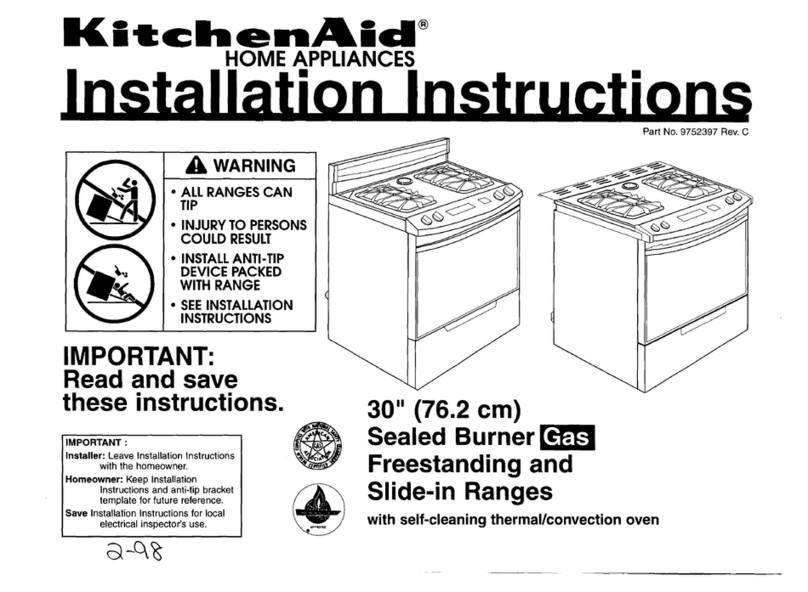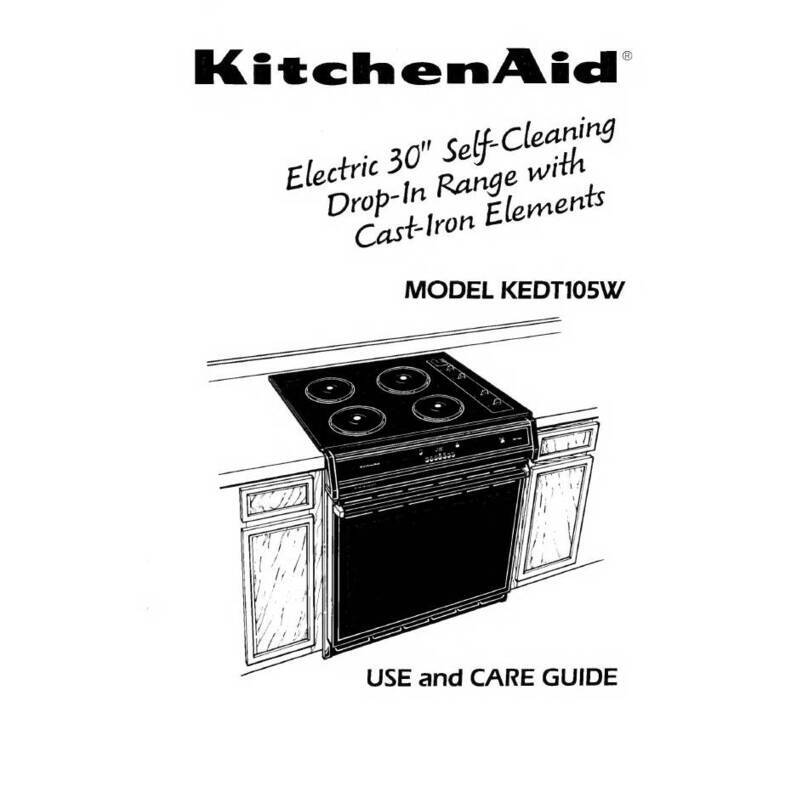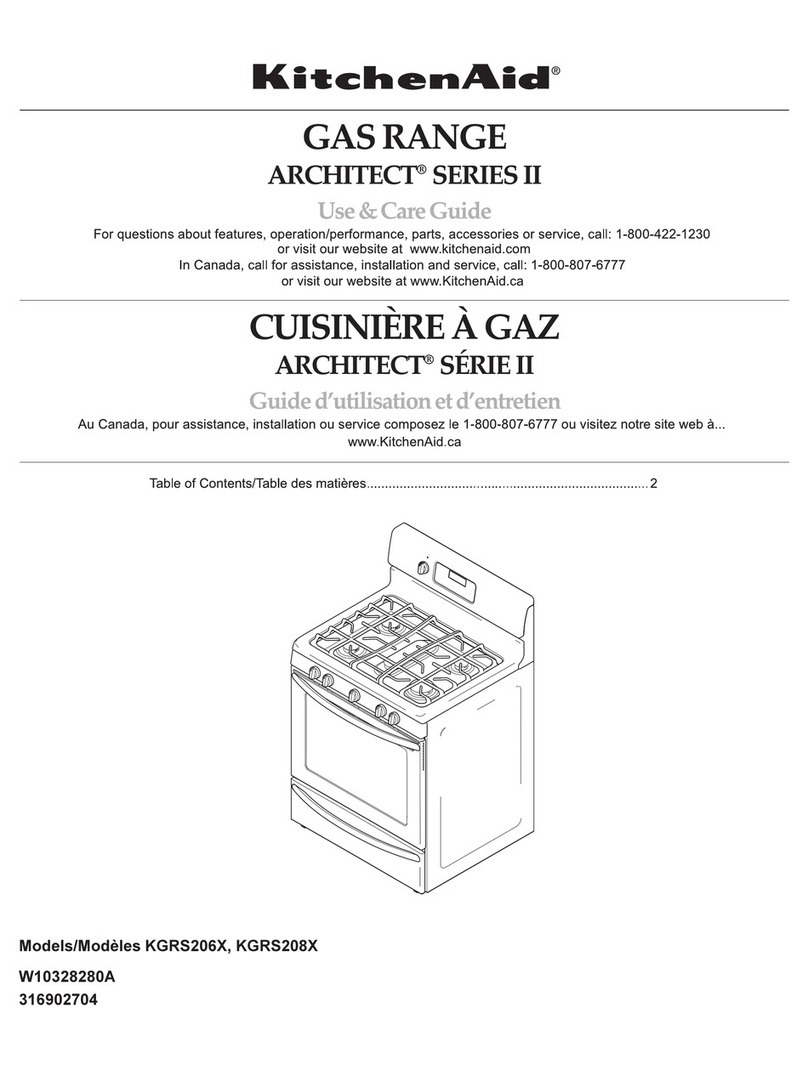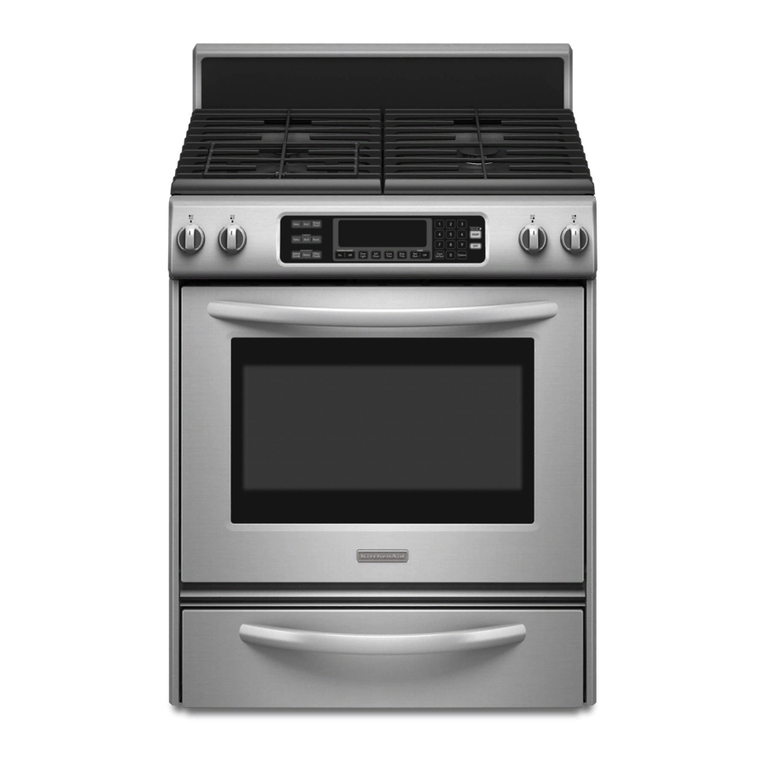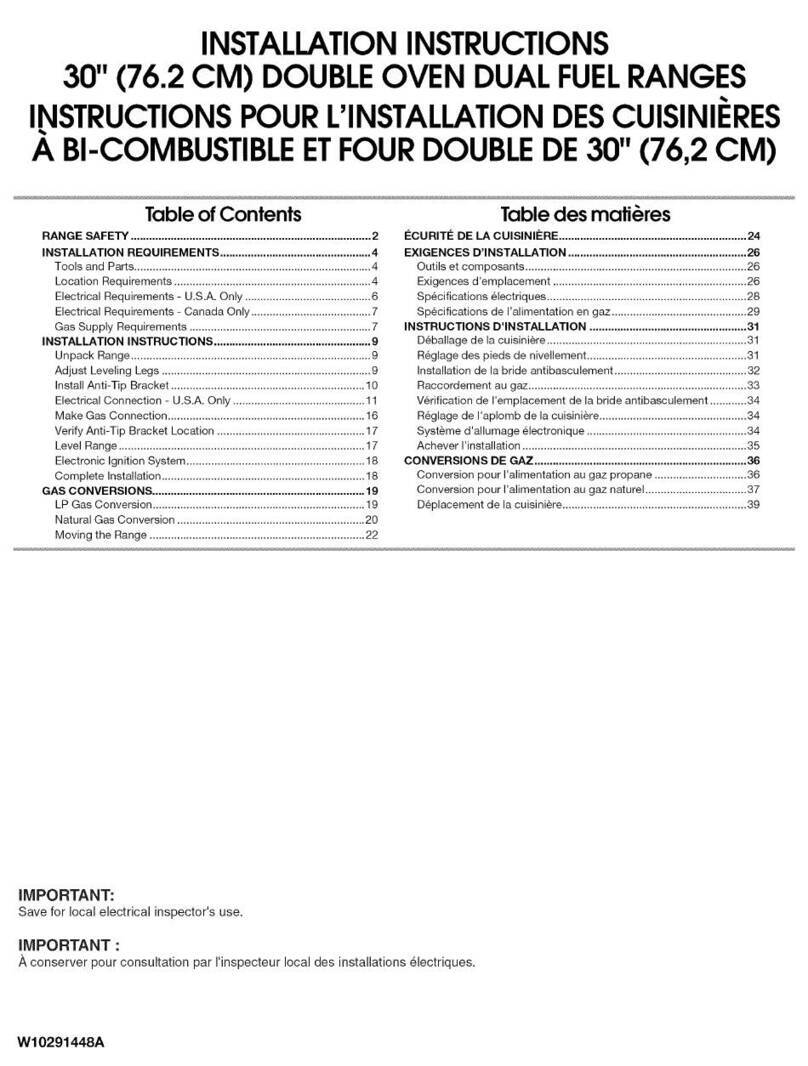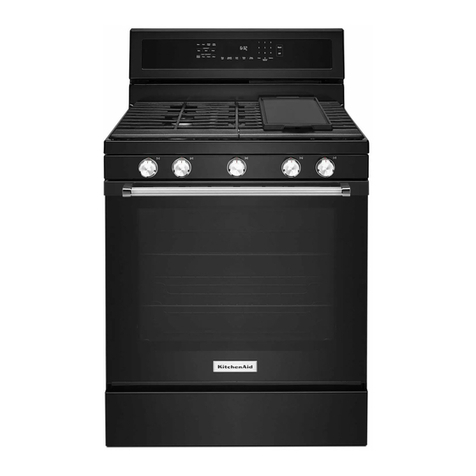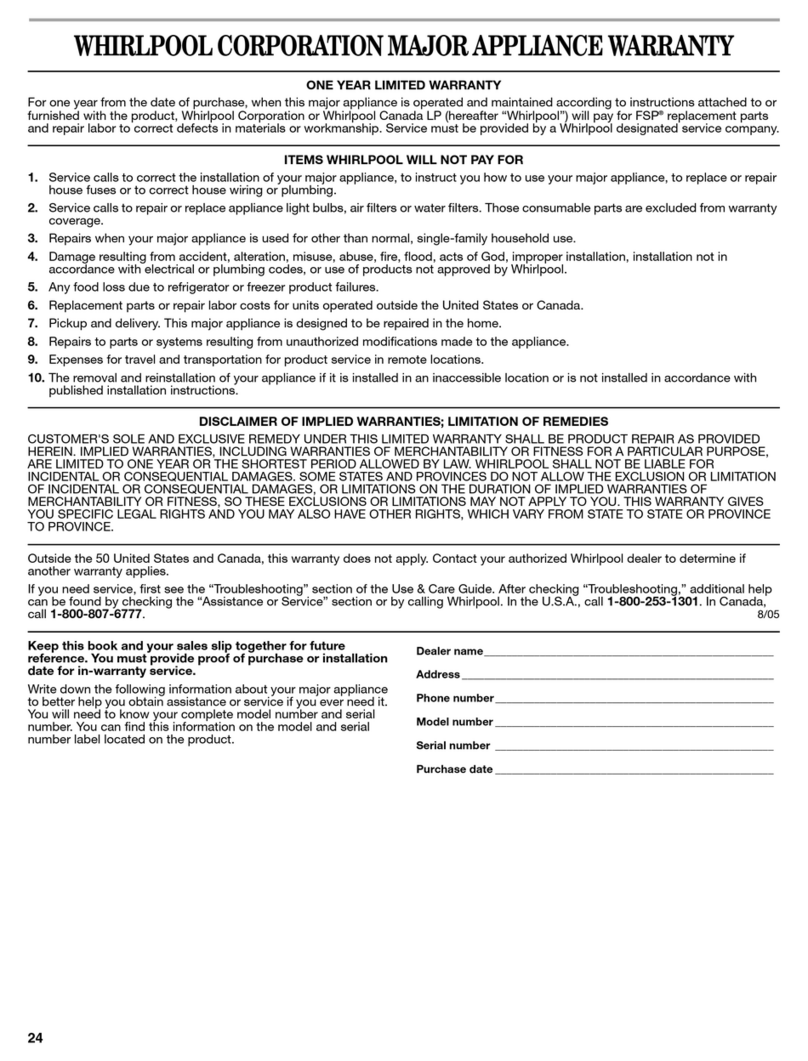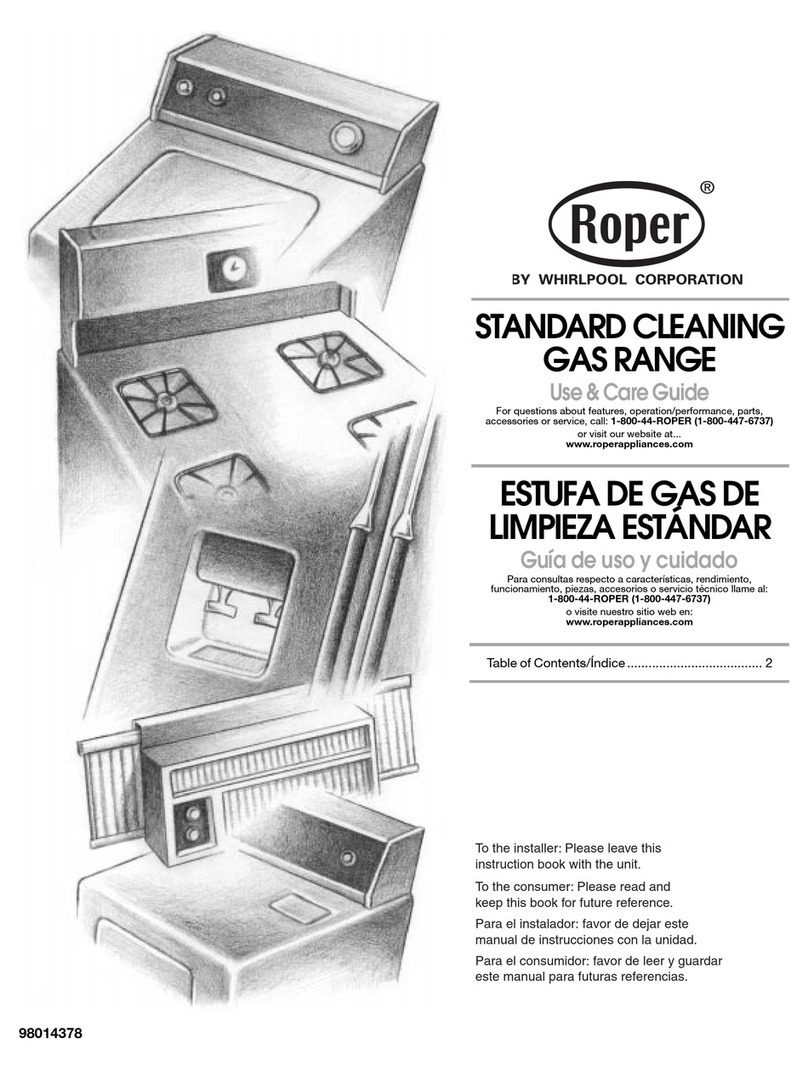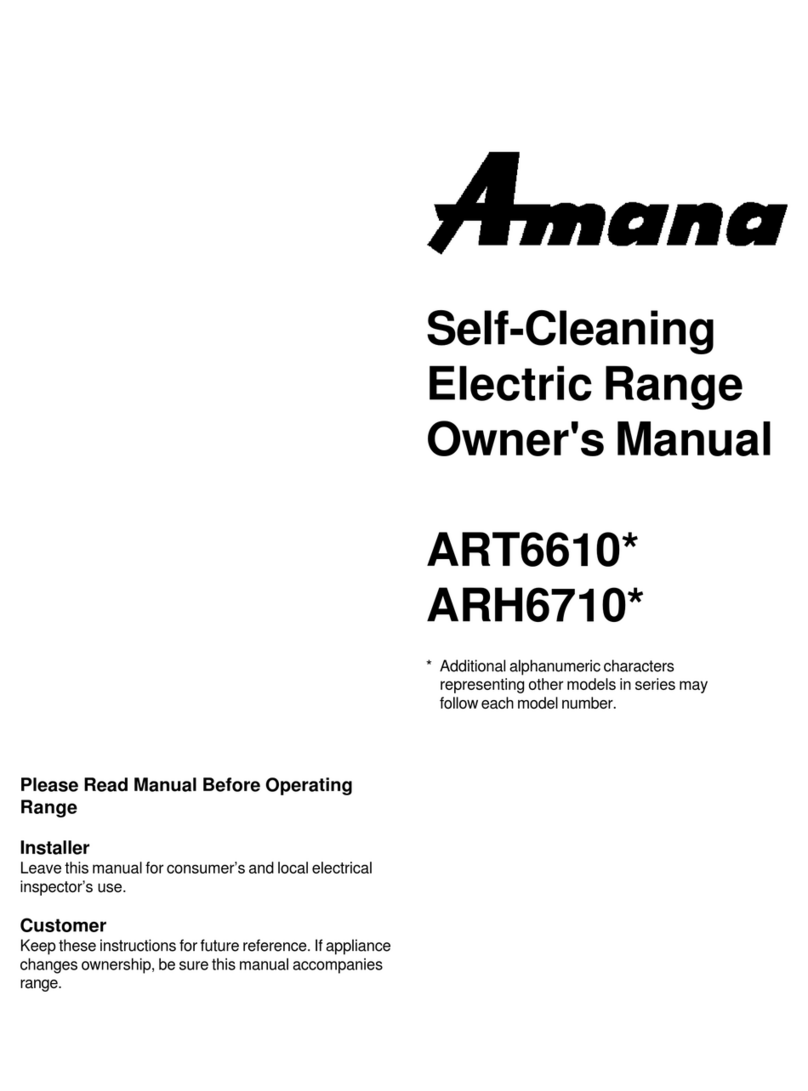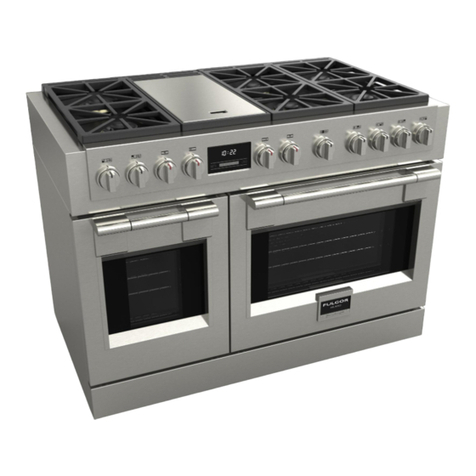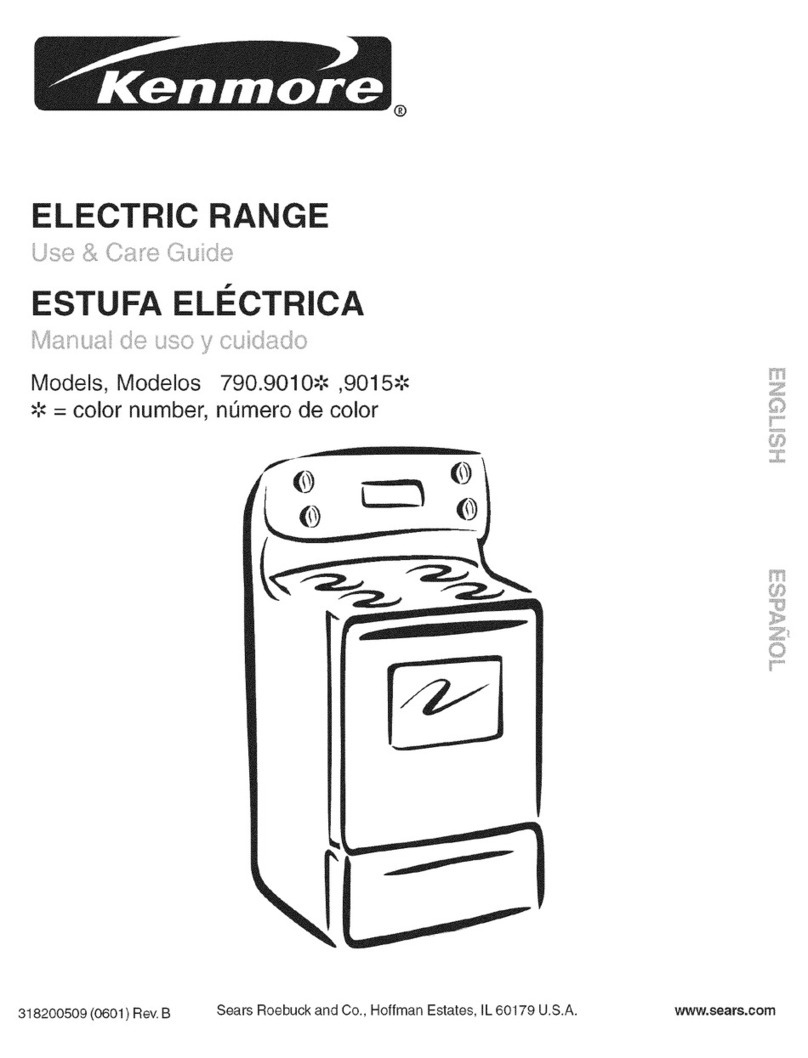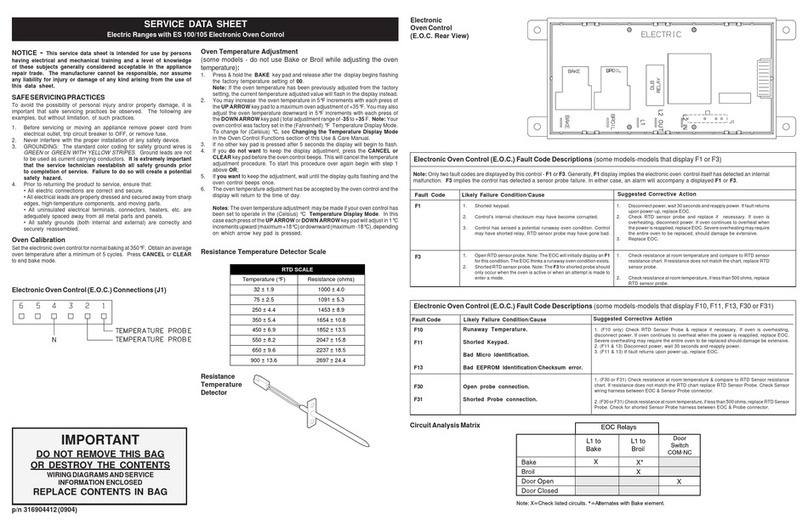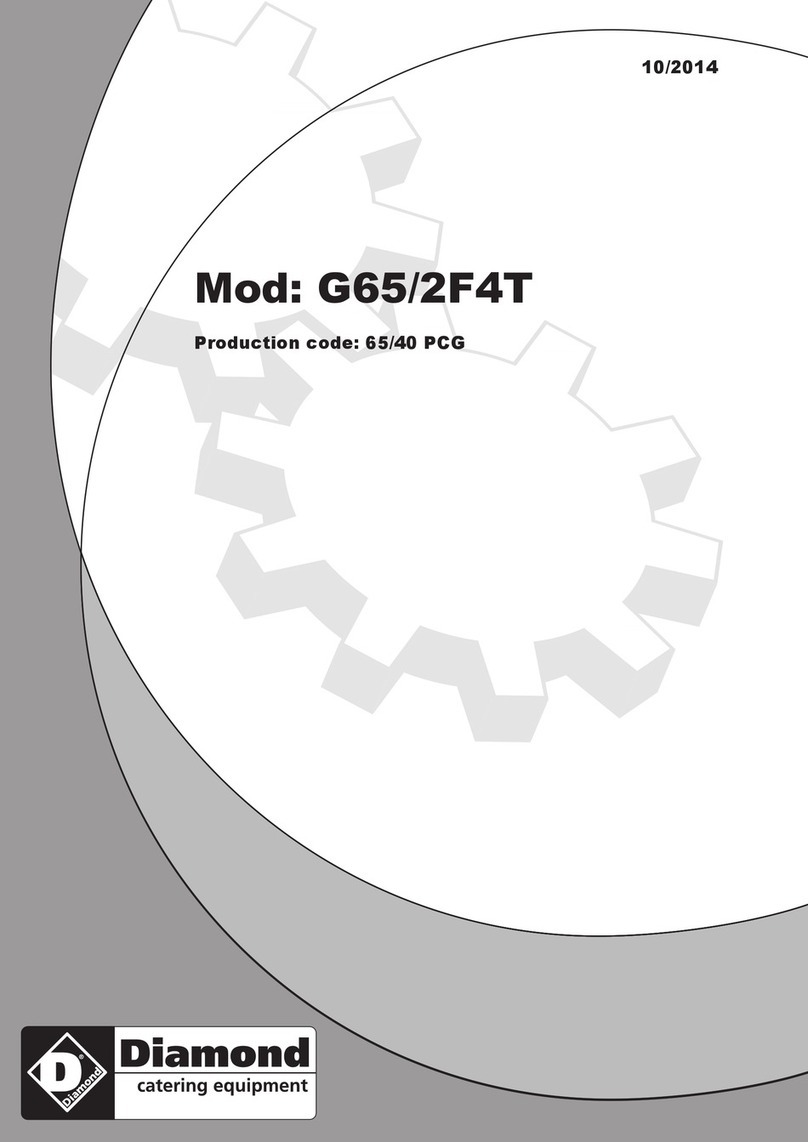
7
Electrical Requirements - U.S.A. Only
If codes permit and a separate ground wire is used, it is
recommended that a qualified electrical installer determine that
the ground path and wire gauge are in accordance with local
codes.
If codes permit and a separate ground wire is used, it is
recommended that a qualified electrician determine that the
ground path is adequate.
Do not use an extension cord.
Make sure that the electrical connection and wire size are
adequate and in conformance with the National Electrical Code,
ANSI/NFPA 70-latest edition and all local codes and ordinances.
A copy of the above code standards can be obtained from:
National Fire Protection Association, One Batterymarch Park,
Quincy, MA 02269.
Electrical Connection
To properly install your range, you must determine the type of
electrical connection you will be using and follow the instructions
provided for it here.
■Do not ground to a gas pipe.
■Check with a qualified electrical installer if you are not sure
the range is properly grounded.
■Do not have a fuse in the neutral or ground circuit.
■Range must be connected to the proper electrical voltage
and frequency as specified on the model/serial number rating
plate. (The model/serial number rating plate is located on the
horizontal surface below the control panel.)
■Range must be connected to a grounded metal, permanent
wiring system.
■A 4-wire or 3-wire, single phase, 240-volt, 60-Hz., AC-only
electrical supply is required on a separate, 30-amp circuit,
fused on both sides of the line.
■A time-delay fuse or circuit breaker is recommended. The
fuse size must not exceed the circuit rating of the range
specified on the model/serial rating plate located on the
horizontal surface below the control panel.
■The range can be connected directly to the fused disconnect
(or circuit breaker box) through flexible, armored or
nonmetallic sheathed, copper or aluminum cable. The
flexible, armored cable extending from the fuse box or circuit
breaker box should be connected directly to the junction box.
See “Electrical Connection.”
■Locate the junction box to allow as much slack as possible
between the junction box and the range so that the range can
be moved if servicing is ever necessary. Do not cut the
conduit.
■A UL listed conduit connector must be provided at each end
of the power supply cable (at the cooktop and at the junction
box).
■Wire sizes and connections must conform with the rating of
the range (30 amps).
■If the house has aluminum wiring, follow the procedure
below:
a) Connect the aluminum wiring to the copper wiring using
special connectors designed and UL listed for joining
copper to aluminum. Follow the electrical connector
manufacturer’s recommended procedure.
b) Aluminum/copper connection must conform with local
codes and industry-accepted wiring practices.
Electrical Requirements - Canada Only
If codes permit and a separate ground wire is used, it is
recommended that a qualified electrical installer determine that
the ground path and wire gauge are in accordance with local
codes.
Be sure that the electrical connection and wire size are adequate
and in conformance with CSA Standard C22.1, Canadian
Electrical Code, Part 1 - latest edition, and all local codes and
ordinances.
A copy of the above code standards can be obtained from:
Canadian Standards Association, 178 Rexdale Blvd., Toronto,
ON M9W 1R3 CANADA.
■Do not ground to a gas pipe.
■Check with a qualified electrical installer if you are not sure
the range is properly grounded.
■Do not have a fuse in the neutral or ground circuit.
■A 4-wire or 3-wire, single phase, 240-volt, 60-Hz., AC-only
electrical supply is required on a separate, 30-amp circuit,
fused on both sides of the line.
■A time-delay fuse or circuit breaker is recommended. The
fuse size must not exceed the circuit rating of the range
specified on the model/serial rating plate located on the
horizontal surface below the control panel.
WARNING
Electrical Shock Hazard
Electrically ground range.
Failure to follow these instructions can result in death,
fire, or electrical shock.
WARNING
Electrical Shock Hazard
Electrically ground range.
Failure to follow these instructions can result in death,
fire, or electrical shock.


